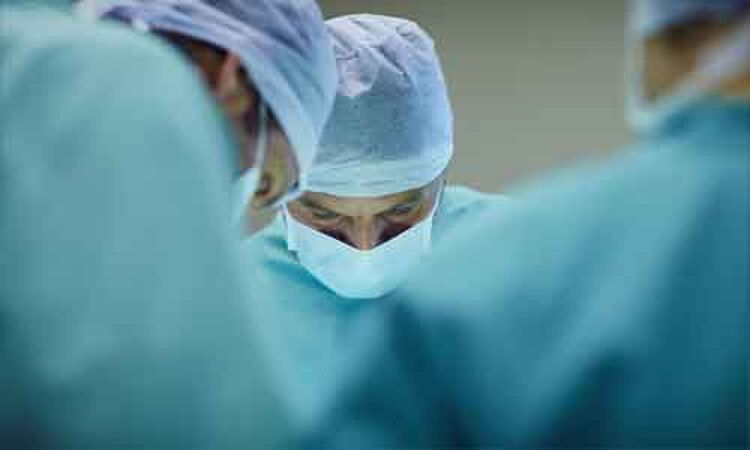- Home
- Medical news & Guidelines
- Anesthesiology
- Cardiology and CTVS
- Critical Care
- Dentistry
- Dermatology
- Diabetes and Endocrinology
- ENT
- Gastroenterology
- Medicine
- Nephrology
- Neurology
- Obstretics-Gynaecology
- Oncology
- Ophthalmology
- Orthopaedics
- Pediatrics-Neonatology
- Psychiatry
- Pulmonology
- Radiology
- Surgery
- Urology
- Laboratory Medicine
- Diet
- Nursing
- Paramedical
- Physiotherapy
- Health news
- Fact Check
- Bone Health Fact Check
- Brain Health Fact Check
- Cancer Related Fact Check
- Child Care Fact Check
- Dental and oral health fact check
- Diabetes and metabolic health fact check
- Diet and Nutrition Fact Check
- Eye and ENT Care Fact Check
- Fitness fact check
- Gut health fact check
- Heart health fact check
- Kidney health fact check
- Medical education fact check
- Men's health fact check
- Respiratory fact check
- Skin and hair care fact check
- Vaccine and Immunization fact check
- Women's health fact check
- AYUSH
- State News
- Andaman and Nicobar Islands
- Andhra Pradesh
- Arunachal Pradesh
- Assam
- Bihar
- Chandigarh
- Chattisgarh
- Dadra and Nagar Haveli
- Daman and Diu
- Delhi
- Goa
- Gujarat
- Haryana
- Himachal Pradesh
- Jammu & Kashmir
- Jharkhand
- Karnataka
- Kerala
- Ladakh
- Lakshadweep
- Madhya Pradesh
- Maharashtra
- Manipur
- Meghalaya
- Mizoram
- Nagaland
- Odisha
- Puducherry
- Punjab
- Rajasthan
- Sikkim
- Tamil Nadu
- Telangana
- Tripura
- Uttar Pradesh
- Uttrakhand
- West Bengal
- Medical Education
- Industry
Liquid rhinoplasty safe, effective option to traditional rhinoplasty

AMERICA: Researchers have found that liquid rhinoplasty is a safe , effective and cost-effective option to traditional rhinoplasty.
As patients continue to seek non-invasive treatments across the cosmetic spectrum, "liquid rhinoplasty" is emerging as the non-surgical alternative to the traditional nose job. Using dermal fillers to change the appearance of the nose, non-surgical rhinoplasty is gaining in popularity due to its relatively low cost, convenience, and short recovery time.
There has previously been debate regarding the safety and effectiveness of this procedure - especially in the absence of large-scale studies reporting on the patient outcomes. To address this gap, the March issue of Plastic and Reconstructive Surgery®, the official medical journal of the American Society of Plastic Surgeons (ASPS), features a new study that includes an analysis of 5,000 non-surgical rhinoplasties performed between 2015 and 2019 - the largest published experience of non-surgical rhinoplasty to date.
The study's lead author, Ayad Harb, FRCSPlast, is a London Consultant Plastic Surgeon and world authority on this increasingly popular procedure.
"We find this treatment an excellent alternative to surgical rhinoplasty in those patients who do not want, cannot have, or do not need surgery," writes Dr Harb. "This study demonstrates high efficacy and safety, and relatively low complication rates in the hands of an experienced clinician."
The study outlines a safe and effective non-surgical rhinoplasty technique, which focuses on three critical aesthetic points of the nose--the radix, bridge and tip.
"The injections are carried out at the radix and move caudally with a micro-droplet technique. Boluses of no more than 0.1 mL at any one point," writes Dr. Harb. "Frequently, and especially nearer the tip, deposits of filler can be as small as 0.02 mL per site. With each injection point, the gel implant is massaged into place and can be maneuverer to produce a smooth and symmetrical surface. The injections continue in the midline until the tip is reached. The tip is injected perpendicular to the skin to improve projection and definition."
According to the study, hyaluronic acid is the preferred filler because of its reversibility in the event of vascular occlusion. Another benefit is that it can be pre-mixed with a local anaesthetic, avoiding the requirement for pre-procedural local anaesthetic which can distort or mask subtle deformities that one is looking to correct.
The patients' mean age was 27 years old (range 18 - 78), and the largest age group was 25-34 years, totaling 52% of the cohort, with a female predominance in the cohort. The average procedure time was just 12 minutes, while the average of filler injected was less than one millilitre (0.72 mL), and the average pain score was only 2 on a 10-point scale.
The most common patient complaint was a dorsal hump, affecting 44 percent. About 20 percent of patients were seeking to refine their results after previous rhinoplasty surgery. Liquid rhinoplasty was also used to treat other patient concerns, such as drooping nasal tip (about 15 percent), lack of definition (almost nine per cent), frontal asymmetry (seven percent) and bulbous tip (six per cent).
"Practitioners who undertake non-surgical rhinoplasty must have a comprehensive understanding of nasal anatomy and aesthetics. It is also vital to maintain an acute ability to recognise immediate complications and a readiness to treat," wrote Dr. Harb. "This study demonstrates low complication rates, with an infection and skin necrosis rate of 0.04 and 0.06 per cent, respectively."
Erythema and swelling were a common observation in the first five days but generally settle with time. Other complications were infrequent. A small number of patients (0.5 per cent) showed signs of vascular occlusion; in most cases, blood flow was restored with simple measures. If not, a hyaluronidase enzyme injection was performed to immediately dissolve the dermal filler.
The duration of the results was 9 to 12 months. Approximately 32 per cent of patients returned at 12 months, most of whom were treated. Many patients demonstrate long-lasting results, some not requiring further treatment even at 24-month follow up.
For further reference please log on: http://dx.doi.org/10.1097/PRS.0000000000006554
Medical Dialogues Bureau consists of a team of passionate medical/scientific writers, led by doctors and healthcare researchers. Our team efforts to bring you updated and timely news about the important happenings of the medical and healthcare sector. Our editorial team can be reached at editorial@medicaldialogues.in.


